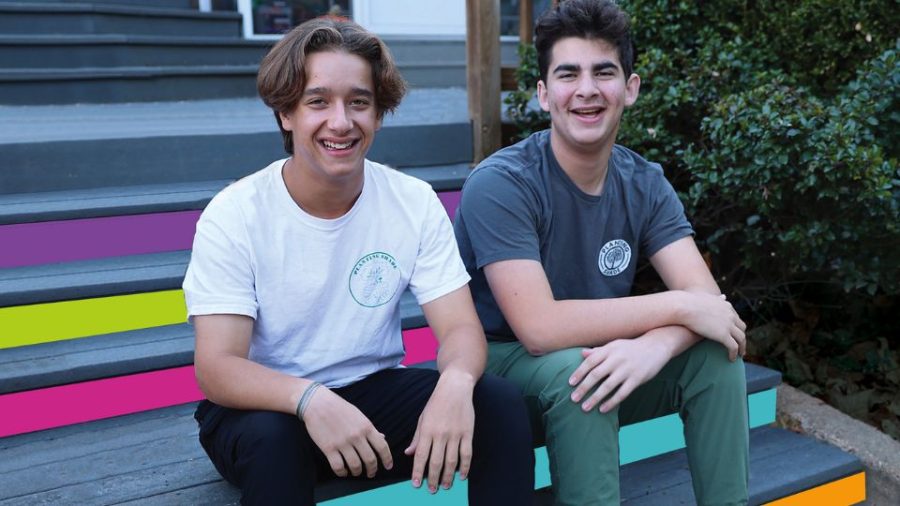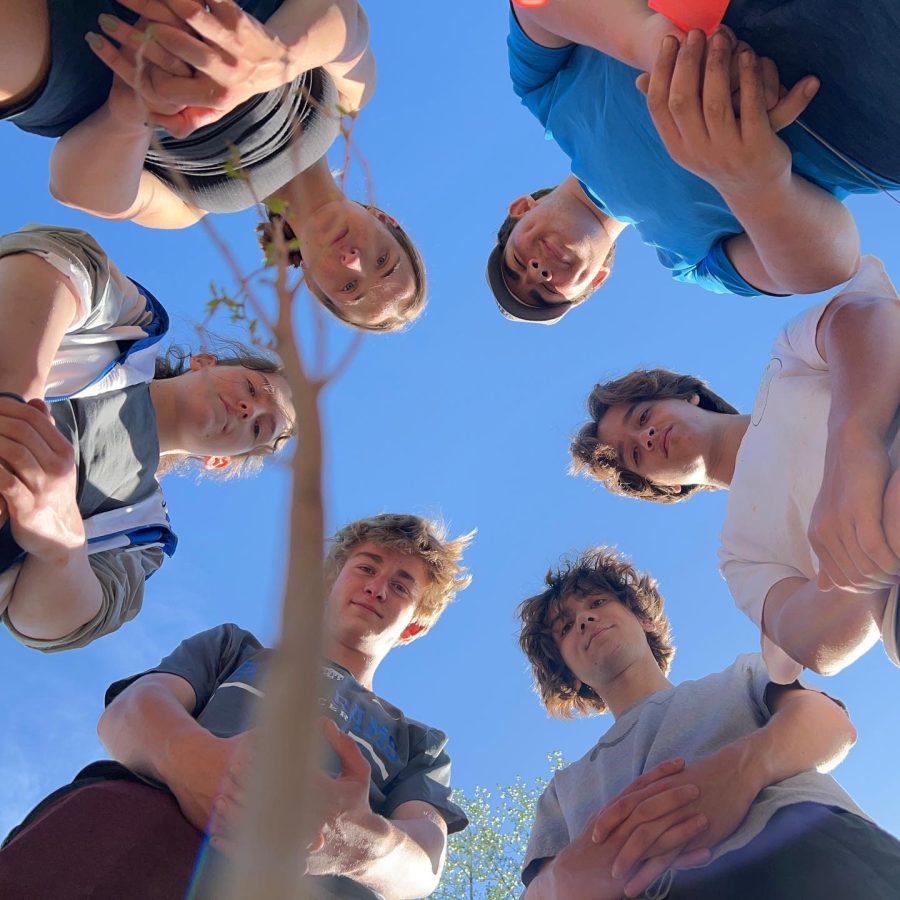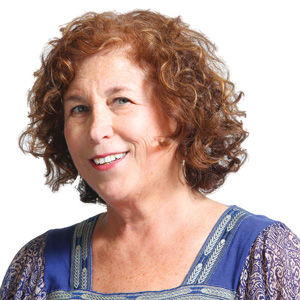These Olivette teens are taking ‘tikkun olam’ into their own hands
Published January 5, 2023
If there were a buddy movie made about tikkun olam, Nathan Goldstein and Ben Horwitz would have starring roles.
The two 17-year-olds, who are seniors at Ladue Horton Watkins High School, led a successful effort to plant 1,000 trees in the St. Louis region last spring. The two plan to plant another 1,000 trees next spring, confident that the second time will be easier, based on all they learned. Their hope is that this tree planting initiative will continue long after they graduate from high school.
But before we get into the particulars behind their volunteer work, let’s dig in (sorry, couldn’t help it) to find out how it all came about.
ADVERTISEMENT
“Ben and I went on this BBYO trip (in July 2021) when we were 16,” explained Goldstein, who, like Horwitz, belongs to Kol Rinah with his family. “We met this kid on the trip named Evan Nied, who saw a need in his community in Virginia Beach after a hurricane (Florence) struck near his house. So many trees had been destroyed. He took the initiative and started this tree planting foundation, which kind of blossomed.”
In 2018, at the age of 15, Nied founded Planting Shade, a nonprofit whose mission is to “increase the planting and growth of trees and tree canopy throughout the world.” The organization partners with schools, camps, hospitals, parks and property owners to plant trees, and it informs communities about what they can do to protect against climate change.
More than 250 Planting Shade volunteers have planted nearly 12,000 trees in Israel, Costa Rica and across the United States, and the organization’s educational events have reached roughly 2,500 people.
Why trees?
Horwitz and Goldstein explained that tree canopy (or leaves) helps maintain sustainable balance over the environment and is essential to our ecosystem. As trees grow, they help stop climate change by removing carbon dioxide from the air, storing carbon in the trees and soil and releasing oxygen into the atmosphere.
ADVERTISEMENT
Not only do they offer shade from summer heat and block cold winter winds, trees also attract birds and wildlife, purify the air, prevent soil erosion and help beautify communities.
Not long after the Israel trip, Goldstein and Horwitz got to talking about Nied’s tree planting project, thinking they would do something similar in St. Louis. They formed the St. Louis chapter of Planting Shade, one of 12 chapters nationwide and in Israel.
“It seemed to perfectly coincide with Jewish values of tikkun olam, repairing the world. That was something that was important to me, especially after all my years at Mirowitz,” Horwitz said, referring to Saul Mirowitz Jewish Community School. “I felt we should take this on. Maybe it was time to help repair the damage of past generations.”
Despite their good intentions, the two admit they had no idea what they were getting into.
“We thought, ‘Oh, yeah, we’ll plant some trees,’ ” Goldstein said, laughing. “We didn’t think it would become this massive project.”
They contacted Nied, who helped them brainstorm about where to get the trees, where to plant them and how to raise money for the project.
“As we did this, we realized the magnitude of what we were doing — 1,000 trees are a lot,” Horwitz said. “We quickly realized we needed volunteers, we needed shovels, mulch and other random planting materials, we needed community support and we needed to fundraise.”
They started by designing and selling T-shirts, the proceeds of which would go to purchase 1,000 river birch seedlings, which are native to Missouri. The seedlings are about 12 to 18 inches high but can grow to be 40 to 70 feet tall.
“Evan said he always got (his) trees from the Department of Forestry in Virginia. Unfortunately, we were too late to order through Missouri forestry for spring planting,” said Goldstein, explaining that orders are taken only at certain times of the year. “Evan was confident we could get the trees from Virginia.”
Although Goldstein and Horwitz raised $150 through T-shirt sales, they were still a few hundred dollars shy of what they needed to buy the seedlings. Nied helped them out by contributing funds from his Planting Shade chapter, which allowed Goldstein and Horwitz to purchase the seedlings in Virginia and have them shipped to St. Louis.
“Now we understand when we need to order in Missouri, and we’re on it,” Goldstein said. “We learned so much and made some mistakes, but I think it will be a lot easier next year because we’re much more knowledgeable.”
One of the people Goldstein and Horwitz reached out to was Kelley Krejnik, who teaches world history and AP microeconomics at Ladue. She’s also the sponsor of Student Action for Greener Earth (SAGE) and runs the greenhouse on campus.
“I am a strong believer in trying to help students uncover their strengths and problem-solve their own areas of challenge,” Krejnik said. “My goal was not to tell them what to do but guide them in the thinking process.”
Krejnik encouraged them to connect with the Missouri Botanical Garden, the city of Ladue and the Ladue School District for suggestions on where to plant. Eventually, after lots of emailing and phone calls, Goldstein and Horwitz secured planting locations at St. Luke’s Hospital, the Jewish Community Center, Ladue Middle School and Fifth Grade Center, Camp Sabra in Lake of the Ozarks and a restorative justice center in north St. Louis County.
They contacted the Metropolitan St. Louis Sewer District (MSD) to find homes in the area where sewer line construction was causing deforestation and called the homeowners to see whether they could plant some of the trees to reforest. They also partnered with local nonprofits to obtain shovels, mulch, fertilizer and other supplies for planting. And they recruited friends and members of their school’s National Honor Society and Science National Honor Society to volunteer and help them with the actual planting.
“Once the trees arrived, we had two to three weeks to get them into the ground,” said Horwitz, who plans to study biomedical engineering in college. “We were working on a very tight schedule.”
Goldstein, who is looking at colleges with an environmental science program, said, “We worked from 6 in the morning to dark on the weekends and pretty much passed out when we got home.”
Krejnik connected the two with Earth Day 365, which runs the annual St. Louis Earth Day celebration in Forest Park. There, they had a booth and were able to give away 250 seedlings in biodegradable bags for folks to plant on their own, with detailed instructions.
Their largest planting was at Camp Sabra, where they planted 110 trees. Camp director Kimberly Holtzman Sloan marvels at the legacy they created.
“The campers who are here now, when they get older and have kids and send them to Sabra, those trees will still be here,” she said. “As the trees get older and blossom and grow taller, they will provide shade, comfort and air quality, not just for us, but for generations to come.”
Sustainability is important to Horwitz and Goldstein, who say this is not a one and done project. The tzedek committee at Congregation Shaare Emeth is raising money to donate to Planting Shade for its spring efforts. And Horwitz and Goldstein hope to expand SAGE to Ladue’s elementary schools, to teach grade schoolers the value of sustainability and spark their interest in working to protect the environment.
“Our goal is to make a lasting impact,” Horwitz said. “We are trying to show that high schoolers can make significant changes. Teenagers are the real rebels. We should be the ones to lead the charge and enlighten people that environmental activism is critical to preserving our planet. We have to take action.”

















